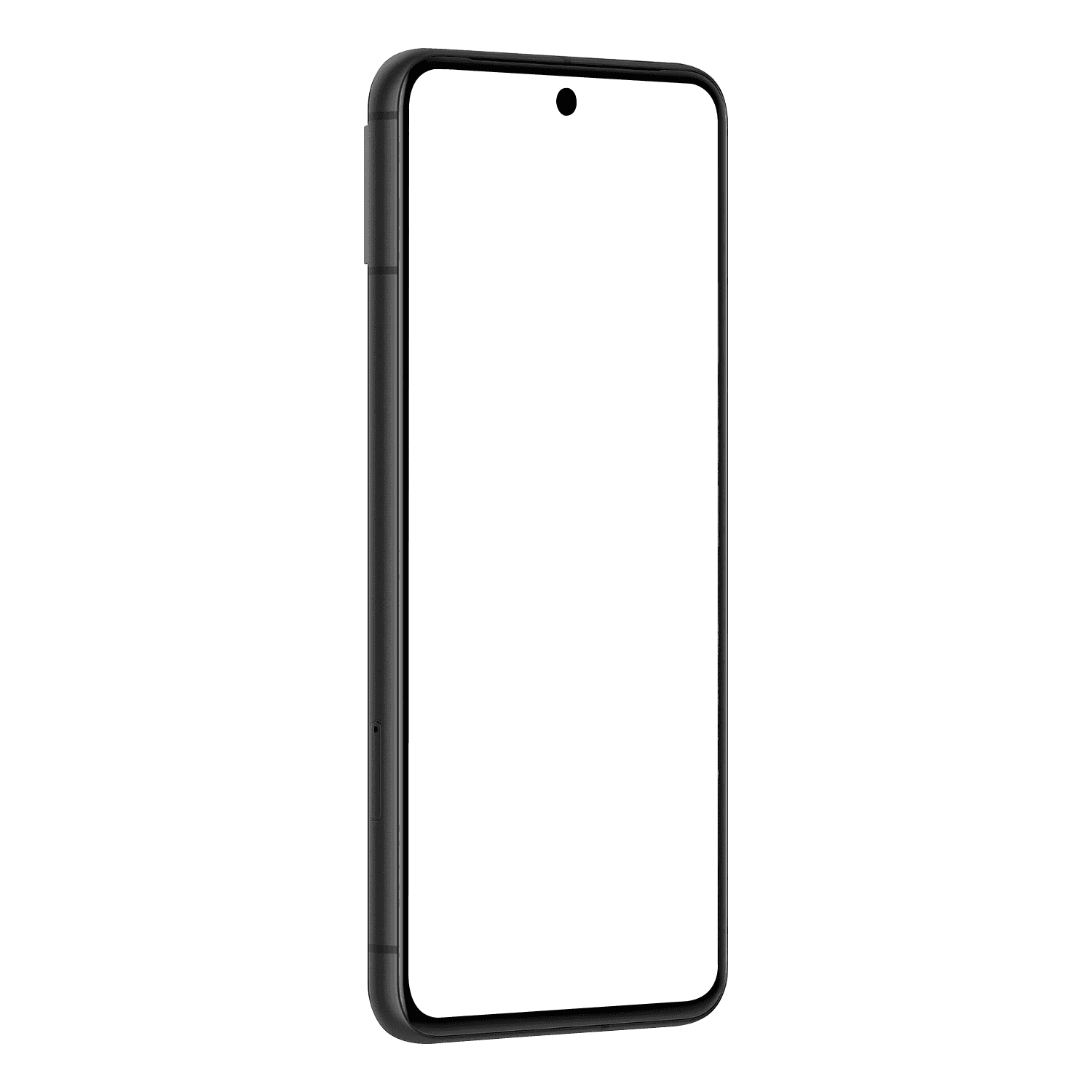
VR Air Hockey
A reimagining of a classic arcade game in Virtual Reality


VR Air Hockey
A reimagining of a classic arcade game in Virtual Reality

Introduction: Immersive Gaming Through VR Air Hockey
Introduction: Immersive Gaming Through VR Air Hockey
During my master’s program, my team of four developed a Virtual Reality (VR) Air Hockey game. As the Extended Reality (XR) Designer, I led the design of intuitive interactions and user experiences. Our goal was to overcome the challenge of limited tactile feedback in traditional VR environments by integrating low-cost passive haptics.
Built in Unity for Oculus Quest, the game featured a virtual air hockey table synced with a physical surface, allowing players to interact naturally. We enhanced realism with 3D-printed controller attachments and haptic feedback to simulate striking and puck interactions. The multiplayer setup enabled real-time matches with synchronized virtual environments, creating an experience reminiscent of real-world air hockey.
During my master’s program, my team of four developed a Virtual Reality (VR) Air Hockey game. As the Extended Reality (XR) Designer, I led the design of intuitive interactions and user experiences. Our goal was to overcome the challenge of limited tactile feedback in traditional VR environments by integrating low-cost passive haptics.
Built in Unity for Oculus Quest, the game featured a virtual air hockey table synced with a physical surface, allowing players to interact naturally. We enhanced realism with 3D-printed controller attachments and haptic feedback to simulate striking and puck interactions. The multiplayer setup enabled real-time matches with synchronized virtual environments, creating an experience reminiscent of real-world air hockey.
Overcoming Challenges
Overcoming Challenges
As we developed the game, our team quickly recognized several key obstacles that needed to be addressed. While virtual air hockey simulations existed, many failed to capture the physical presence and interaction that define the real-world game. Users often struggled with immersion due to the lack of tactile feedback and realistic object calibration, making gameplay feel disconnected.
To tackle these hurdles, we conducted playtests and interviews with VR users, gathering feedback on their experiences with other VR air hockey simulations. Our goal was to identify pain points and areas for improvement.
Here’s what we discovered and how we addressed it:
As we developed the game, our team quickly recognized several key obstacles that needed to be addressed. While virtual air hockey simulations existed, many failed to capture the physical presence and interaction that define the real-world game. Users often struggled with immersion due to the lack of tactile feedback and realistic object calibration, making gameplay feel disconnected.
To tackle these hurdles, we conducted playtests and interviews with VR users, gathering feedback on their experiences with other VR air hockey simulations. Our goal was to identify pain points and areas for improvement.
Here’s what we discovered and how we addressed it:
Limited Immersion
Limited Immersion
Users struggled to feel engaged due to the lack of tactile feedback. With no physical interaction points, movements felt unnatural, making it difficult for players to connect with the virtual environment. This significantly reduced realism and the overall enjoyment of gameplay.
Users struggled to feel engaged due to the lack of tactile feedback. With no physical interaction points, movements felt unnatural, making it difficult for players to connect with the virtual environment. This significantly reduced realism and the overall enjoyment of gameplay.
Inconsistent Interactions
Inconsistent Interactions
Multiplayer sessions faced synchronization issues, with players experiencing delayed or out-of-sync actions. Misaligned interactions led to confusion and disrupted the competitive flow, negatively impacting the user experience.
Multiplayer sessions faced synchronization issues, with players experiencing delayed or out-of-sync actions. Misaligned interactions led to confusion and disrupted the competitive flow, negatively impacting the user experience.
Unrealistic Mechanics
Unrealistic Mechanics
Without passive haptic support, interactions with virtual objects felt disconnected. Players couldn’t gauge the weight or impact of the puck, and the absence of realistic striker resistance diminished the sense of control, making the game feel artificial and less engaging.
Without passive haptic support, interactions with virtual objects felt disconnected. Players couldn’t gauge the weight or impact of the puck, and the absence of realistic striker resistance diminished the sense of control, making the game feel artificial and less engaging.
👋
My hands didn’t feel like they were interacting with anything.
🌲
The environment looked good, but it didn’t feel real
🤕
Without physical cues, I didn’t feel grounded in the game
🧑🦯➡️
I couldn’t tell where the table ended
💨
It felt like I was just floating around with no real connection to the game
🤯
There was no feedback when I hit the puck. It broke the immersion
⏳
The system doesn’t load fast enough.
📋
The admin settings are a nightmare.
📄
Creating quotes are a nightmare
❌
Data in one tab never matches another.
🛞
There never seems to be the right amount of inventory
😮💨
🖥️
I have three tabs open just to check stock.
🏋️
Even basic tasks are harder than they should be.
It takes forever to load anything.
⏱️
❄️
Pages keep crashing or freezing.
📲
It’s impossible to use on my phone.
📼
It looks like something from 2006.
🤕
📚
The menus and layout are overwhelming.
👋
My hands didn’t feel like they were interacting with anything.
🌲
The environment looked good, but it didn’t feel real
🤕
Without physical cues, I didn’t feel grounded in the game
🧑🦯➡️
I couldn’t tell where the table ended
💨
It felt like I was just floating around with no real connection to the game
🤯
There was no feedback when I hit the puck. It broke the immersion
⏳
The system doesn’t load fast enough.
📋
The admin settings are a nightmare.
📄
Creating quotes are a nightmare
❌
Data in one tab never matches another.
🛞
There never seems to be the right amount of inventory
😮💨
🖥️
I have three tabs open just to check stock.
🏋️
Even basic tasks are harder than they should be.
It takes forever to load anything.
⏱️
❄️
Pages keep crashing or freezing.
📲
It’s impossible to use on my phone.
📼
It looks like something from 2006.
🤕
📚
The menus and layout are overwhelming.
👋
My hands didn’t feel like they were interacting with anything.
🌲
The environment looked good, but it didn’t feel real
🤕
Without physical cues, I didn’t feel grounded in the game
🧑🦯➡️
I couldn’t tell where the table ended
💨
It felt like I was just floating around with no real connection to the game
🤯
There was no feedback when I hit the puck. It broke the immersion
⏳
The system doesn’t load fast enough.
📋
The admin settings are a nightmare.
📄
Creating quotes are a nightmare
❌
Data in one tab never matches another.
🛞
There never seems to be the right amount of inventory
😮💨
🖥️
I have three tabs open just to check stock.
🏋️
Even basic tasks are harder than they should be.
It takes forever to load anything.
⏱️
❄️
Pages keep crashing or freezing.
📲
It’s impossible to use on my phone.
📼
It looks like something from 2006.
🤕
📚
The menus and layout are overwhelming.
Designing With Players in Mind
Designing With Players in Mind
Our VR air hockey game was designed to cater to two core player groups: competitive gamers and casual VR users. Through extensive research and playtesting, we identified the unique needs of both groups.
By keeping these personas at the heart of our design, we crafted a game that balances realistic physics, passive haptics, and interactive feedback to deliver both excitement and accessibility for players of all skill levels.
Our VR air hockey game was designed to cater to two core player groups: competitive gamers and casual VR users. Through extensive research and playtesting, we identified the unique needs of both groups.
By keeping these personas at the heart of our design, we crafted a game that balances realistic physics, passive haptics, and interactive feedback to deliver both excitement and accessibility for players of all skill levels.

Competitive Gamers
Focused on fast-paced, high-stakes matches, these users demand precise mechanics, seamless multiplayer synchronization, and realistic physics. Every detail matters, from puck responsiveness to smooth interactions, to ensure fair and competitive play.

Casual Players
These players value fun, accessibility, and immersion. They need intuitive controls, physical feedback, and easy-to-navigate interfaces to feel engaged without a steep learning curve. A game that feels natural and realistic enhances their overall enjoyment.
Defining the Challenge
Defining the Challenge
With diverse player needs and expectations, aligning our vision was our first major challenge. We needed a clear strategy to address both immersion and gameplay synchronization while ensuring accessibility for all players.
To begin, I collaborated with my team to define key objectives. Through brainstorming sessions and user feedback analysis, we established two guiding questions that shaped our approach:
With diverse player needs and expectations, aligning our vision was our first major challenge. We needed a clear strategy to address both immersion and gameplay synchronization while ensuring accessibility for all players.
To begin, I collaborated with my team to define key objectives. Through brainstorming sessions and user feedback analysis, we established two guiding questions that shaped our approach:
1.
How might we enhance immersion through realistic, tactile interactions?
2.
How might we ensure seamless multiplayer synchronization for competitive play?
With our goals in focus, we conducted user interviews and brainstorming sessions to gather insights from diverse perspectives. While we faced initial challenges, expert feedback helped refine our ideas. Lightning demos provided inspiration from industry best practices.
With our goals in focus, we conducted user interviews and brainstorming sessions to gather insights from diverse perspectives. While we faced initial challenges, expert feedback helped refine our ideas. Lightning demos provided inspiration from industry best practices.
Design Sprint
Highlights




Turning Ideas Into Innovation
Turning Ideas Into Innovation
We reimagined the classic Air Hockey experience with an intuitive and immersive VR interface. Designed for smooth interaction, the UI enhances gameplay with responsive controls, real-time feedback, and dynamic visual cues. From fluid menu navigation to in-game score tracking, every element is crafted to keep players engaged and fully immersed in the action.
We reimagined the classic Air Hockey experience with an intuitive and immersive VR interface. Designed for smooth interaction, the UI enhances gameplay with responsive controls, real-time feedback, and dynamic visual cues. From fluid menu navigation to in-game score tracking, every element is crafted to keep players engaged and fully immersed in the action.
Designing the Game Interface
Designing the Game Interface
Users wanted a simple setup process that guided them from table calibration to gameplay without confusion. Quick access to game modes, settings, and real-time feedback were essential to maintaining immersion and engagement. To address these needs, I implemented a clear menu flow, enabling players to configure their game and begin matches.
Users wanted a simple setup process that guided them from table calibration to gameplay without confusion. Quick access to game modes, settings, and real-time feedback were essential to maintaining immersion and engagement. To address these needs, I implemented a clear menu flow, enabling players to configure their game and begin matches.






A FRESH TAKE ON
VR AIR HOCKEY
PRESENTING



A FRESH TAKE ON
VR AIR HOCKEY
PRESENTING
Add Attachments

To enhance realism, players attach 3D-printed components with soft padding to their VR controllers. These attachments mimic real air hockey strikers, providing tactile feedback as they glide across the table’s surface. The padding protects both the table and controllers from wear while improving control and precision during gameplay.
Add Attachments

To enhance realism, players attach 3D-printed components with soft padding to their VR controllers. These attachments mimic real air hockey strikers, providing tactile feedback as they glide across the table’s surface. The padding protects both the table and controllers from wear while improving control and precision during gameplay.
Set Up Your Tabel

Players begin by calibrating the virtual table to match a physical surface. Using the Tabletop Arcade interface, they follow on-screen instructions to position their VR controllers upside down on the edges of the table. The system uses the midpoint and orientation of the controllers to align the virtual table accurately.
Set Up Your Tabel

Players begin by calibrating the virtual table to match a physical surface. Using the Tabletop Arcade interface, they follow on-screen instructions to position their VR controllers upside down on the edges of the table. The system uses the midpoint and orientation of the controllers to align the virtual table accurately.
Select Your Settings

After table calibration, players access the main menu to select multiplayer or training mode. They can quickly adjust settings like match points, game duration, audio, and visuals. Once configured, players either join the multiplayer lobby or start a solo session, transitioning into gameplay.
Select Your Settings

After table calibration, players access the main menu to select multiplayer or training mode. They can quickly adjust settings like match points, game duration, audio, and visuals. Once configured, players either join the multiplayer lobby or start a solo session, seamlessly transitioning into gameplay.
Let the Games Begin!
Get ready to step into the action! With realistic haptic feedback, precise controls, and seamless multiplayer integration, every match feels like the real thing. Whether you’re competing against friends or honing your skills solo, the game delivers an immersive and fast-paced experience.


And… Let the Games Begin!
Feel every hit with haptic feedback designed to mimic real-world sensations
Tailor your experience by adjusting game modes, match points, and visuals
Experience smooth and accurate striker control with real-time feedback
Enjoy seamless multiplayer matches with minimal latency

What Were the Results?
What Were the Results?
Following the completion of the game, our team observed significant satisfaction in player engagement, immersion, and game performance. The integration of passive haptics, multiplayer synchronization, and intuitive controls resulted in a more realistic and fluid experience. Players reported smoother gameplay, better control over striker and puck interactions, and fewer multiplayer connectivity issues. Additionally, the calibration system allowed for fast setups, allowing users to remain engaged for longer periods.
Our findings and design process were further validated through academic research, culminating in a publication in the proceedings of HCI International 2024. This study explored the impact of passive haptics on user perception of physical properties in virtual environments.
Following the completion of the game, our team observed significant satisfaction in player engagement, immersion, and game performance. The integration of passive haptics, multiplayer synchronization, and intuitive controls resulted in a more realistic and fluid experience. Players reported smoother gameplay, better control over striker and puck interactions, and fewer multiplayer connectivity issues. Additionally, the calibration system allowed for fast setups, allowing users to remain engaged for longer periods.
Our findings and design process were further validated through academic research, culminating in a publication in the proceedings of HCI International 2024. This study explored the impact of passive haptics on user perception of physical properties in virtual environments.
Haptic Feedback:
Players reported that haptic feedback enhanced the sense of realism during gameplay.
81%
UI Navigation Efficiency:
Users completed setup and navigation quickly, averaging under 2 minutes.
73%
Overall Satisfaction:
Testing revealed a highly engaging and enjoyable experience, with an average score of
85%
Competitive Gamers
Focused on fast-paced, high-stakes matches, these users demand precise mechanics, seamless multiplayer synchronization, and realistic physics. Every detail matters, from puck responsiveness to smooth interactions, to ensure fair and competitive play.

Casual Players
These players value fun, accessibility, and immersion. They need intuitive controls, physical feedback, and easy-to-navigate interfaces to feel engaged without a steep learning curve. A game that feels natural and realistic enhances their overall enjoyment.

1.
How might we enhance immersion through realistic, tactile interactions?
2.
How might we ensure seamless multiplayer synchronization for competitive play?
Design Sprint Highlights






Ready for the Next Case Study?

SocialClub
Expand your network and explore your community

SocialClub
Expand your network and explore your community
























Read Case Study



